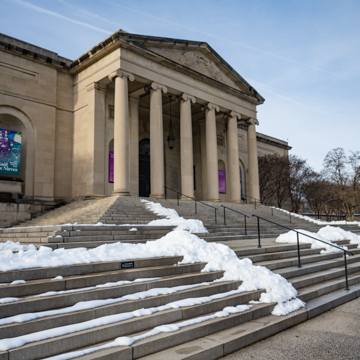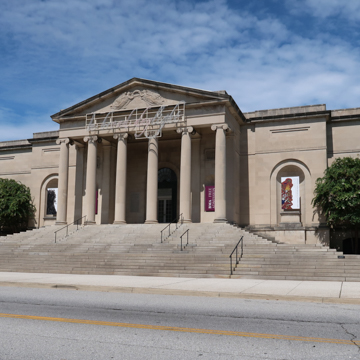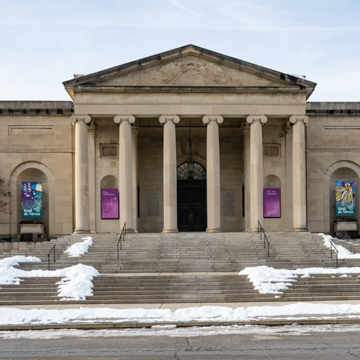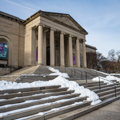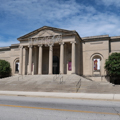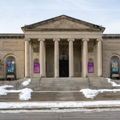This was the first museum designed by Pope, one of America’s premiere interpreters of classically inspired architecture. Like other Beaux-Arts-trained architects, Pope believed monumental architecture to be the highest form of art. Over the course of his career he designed memorial forms ranging from mausoleums to national monuments and institutions of art and science. Here, Pope developed a symmetrical, biaxial plan featuring a central portico, with interior galleries interspersed with quiet open spaces, a plan that would inform his museum designs thereafter. Borrowing from Roman motifs, the museum maintains Pope’s severity, employing broad expanses of limestone walls broken by niches, recessed panels, and pedimented porticoes, similar to Pope’s concurrent University Baptist Church (1925–1928) and Temple of the Scottish Rite (1928), at 3501 and 3800 N. Charles, respectively. While evocative of the architecture of antiquity, it reflects Pope’s own brand of classicism specific to the modern American experience. It was erected during the heyday of museum building in America, from 1870 to 1940.
The building constituted the first purpose-built home for the collection previously housed in the Mount Vernon Place residence of its Garrett family benefactors. Following the museum’s success, Pope was asked to prepare designs for the expansion of the Metropolitan Museum of Art in New York City and the Tate Gallery and British Museum in London. By the 1930s Pope was considered America’s leading museum architect, culminating his career with the National Gallery of Art in Washington.
Pope also designed the first of three major additions, repeating the fundamental characteristics of the original building while introducing an interior court. The next two were built appropriately contemporary to the modern art housed within. The Bower, Lewis and Thrower additions provide a stark contrast to Pope’s earlier work, embracing modern materials, abstract forms, and an outdoor patio and sculpture garden.
On the property is the last remnant of Robert Goodloe Harper’s Oakland estate, a spring house or dairy designed by Benjamin Henry Latrobe, c. 1812, one of the two remaining Latrobe buildings in Baltimore. Modeled after the Temple of Ilissus in Athens, this delightfully pretentious dependency takes the form of a Greek Temple in miniature, featuring a pedimented portico supported by Ionic columns. It was moved here in 1932 to enable its preservation based on a design by architects Pope and Laurence Hall Fowler.


